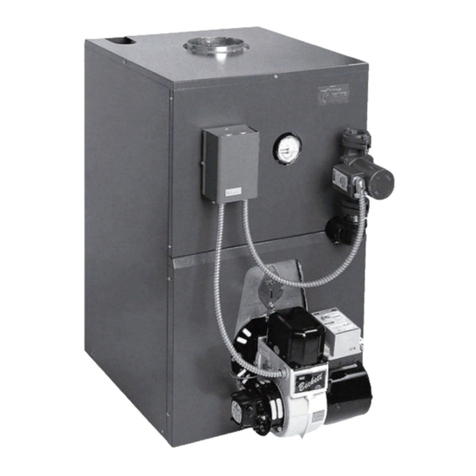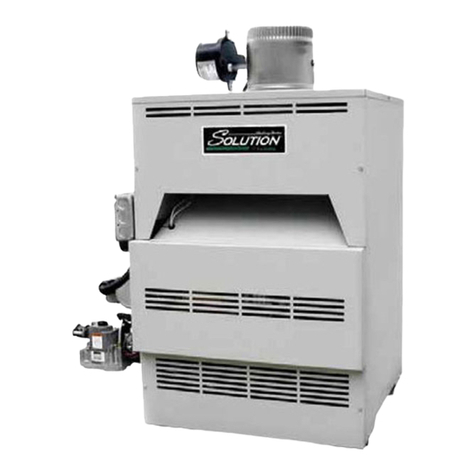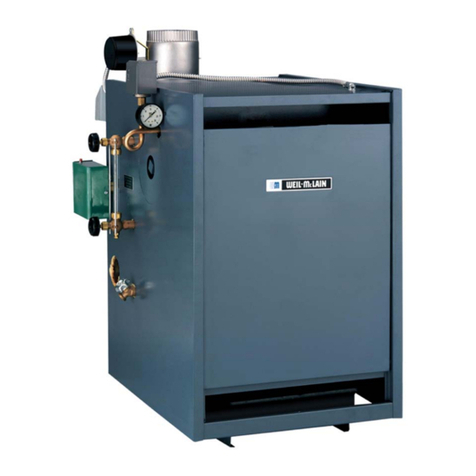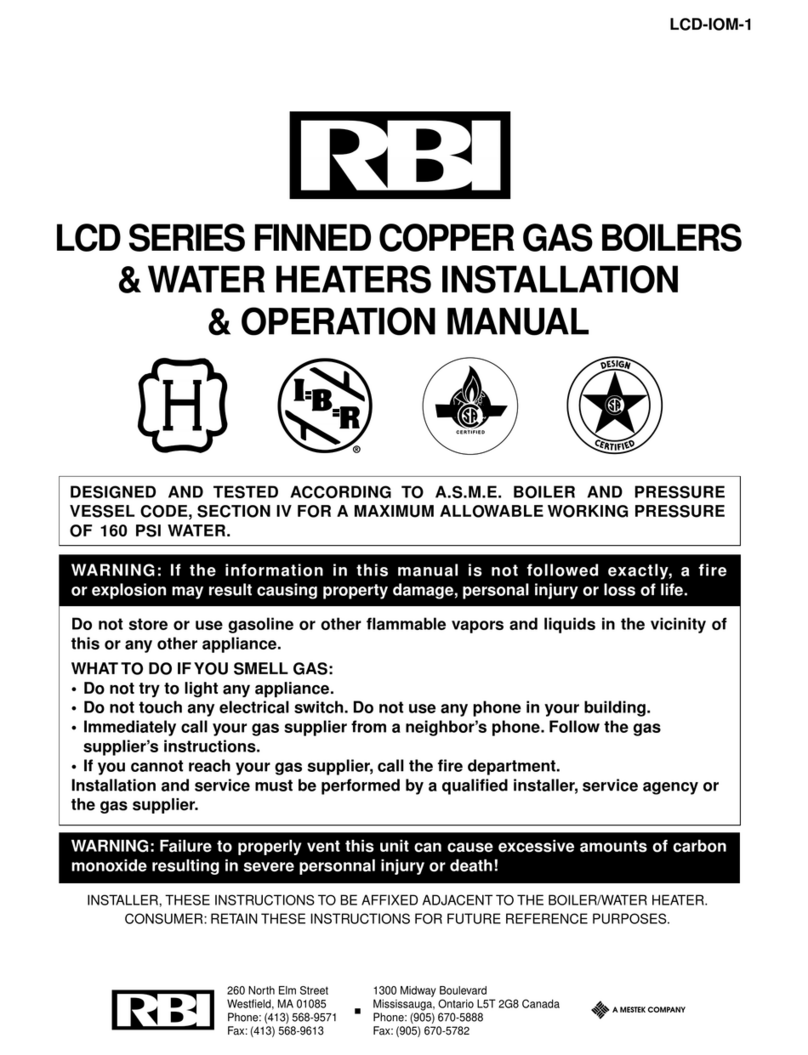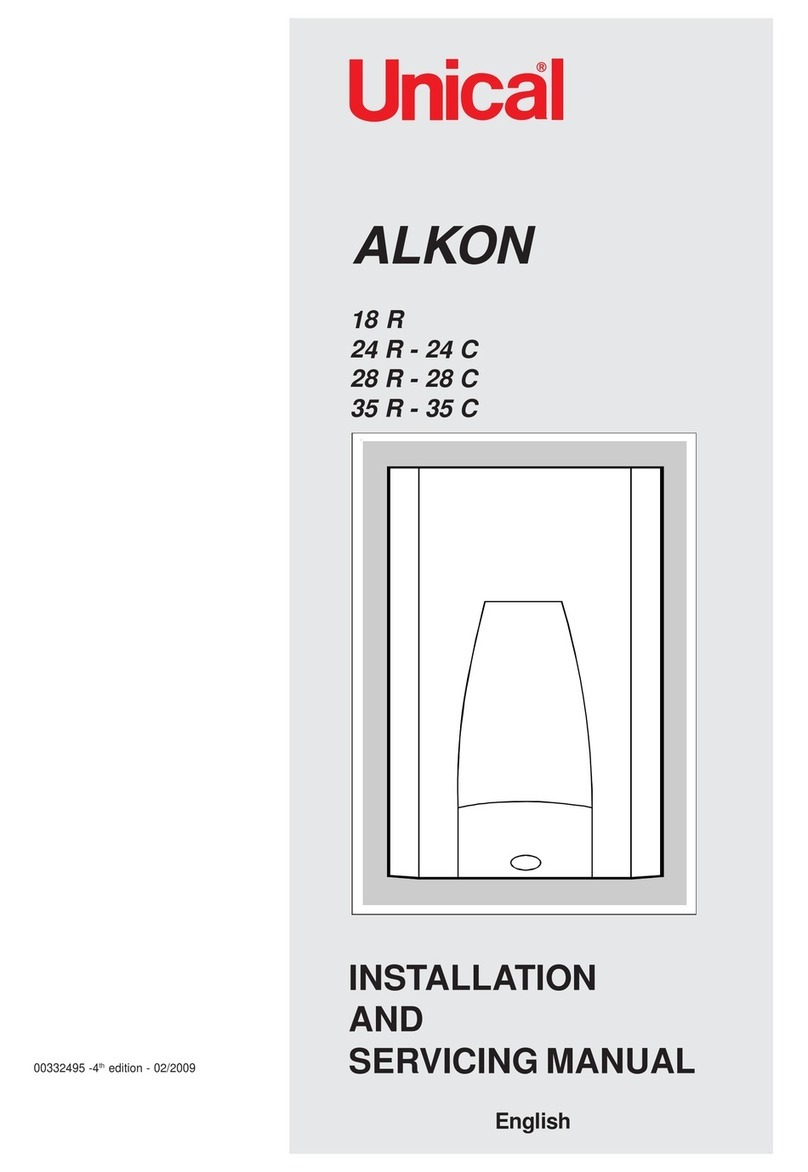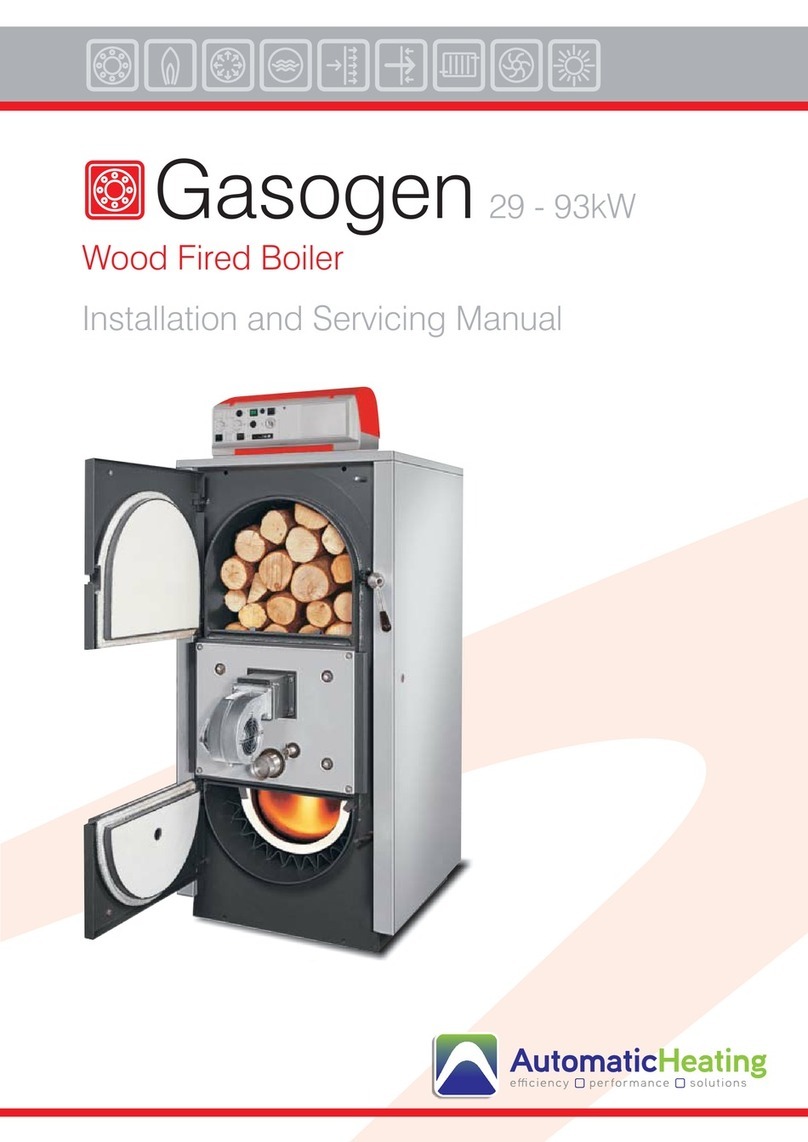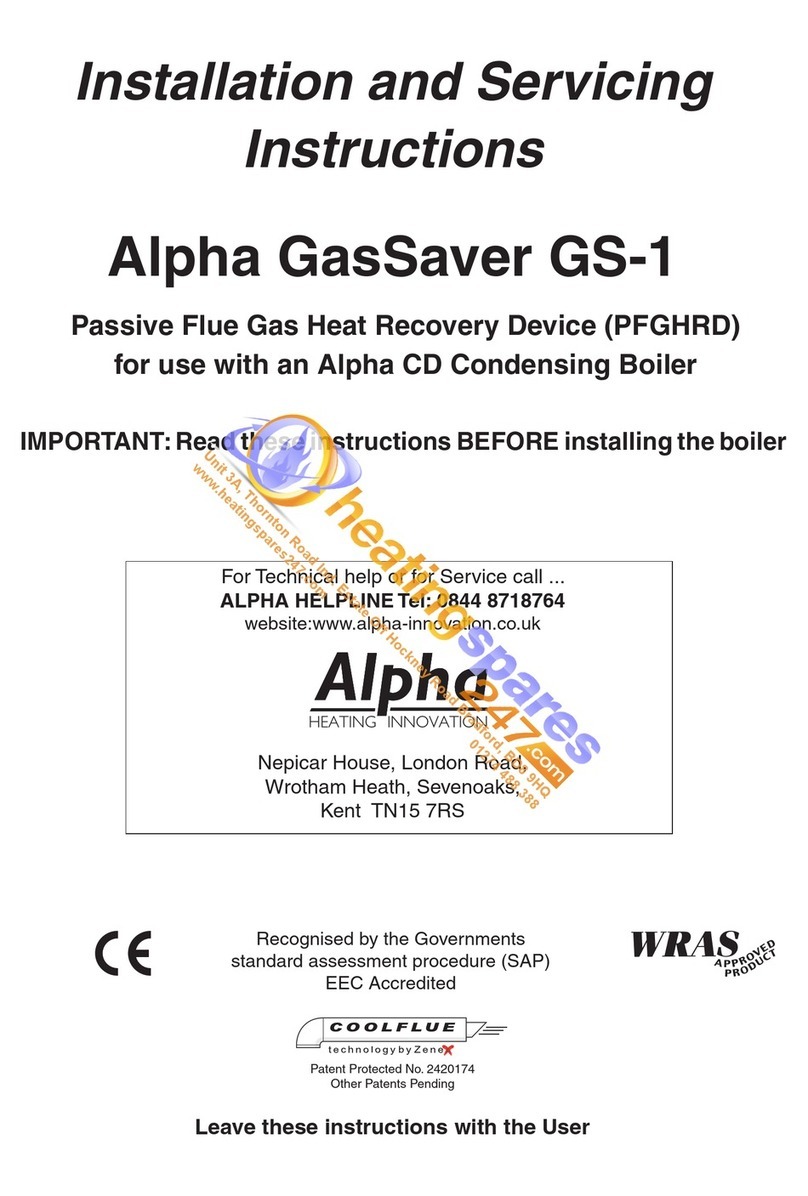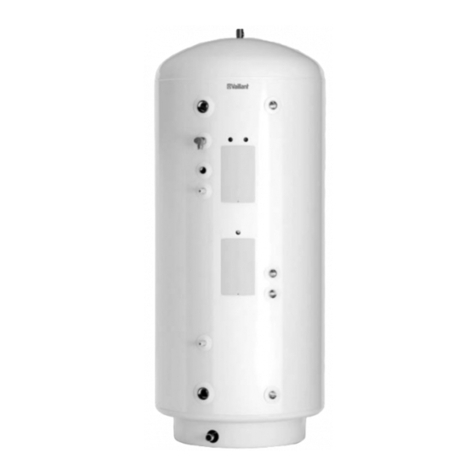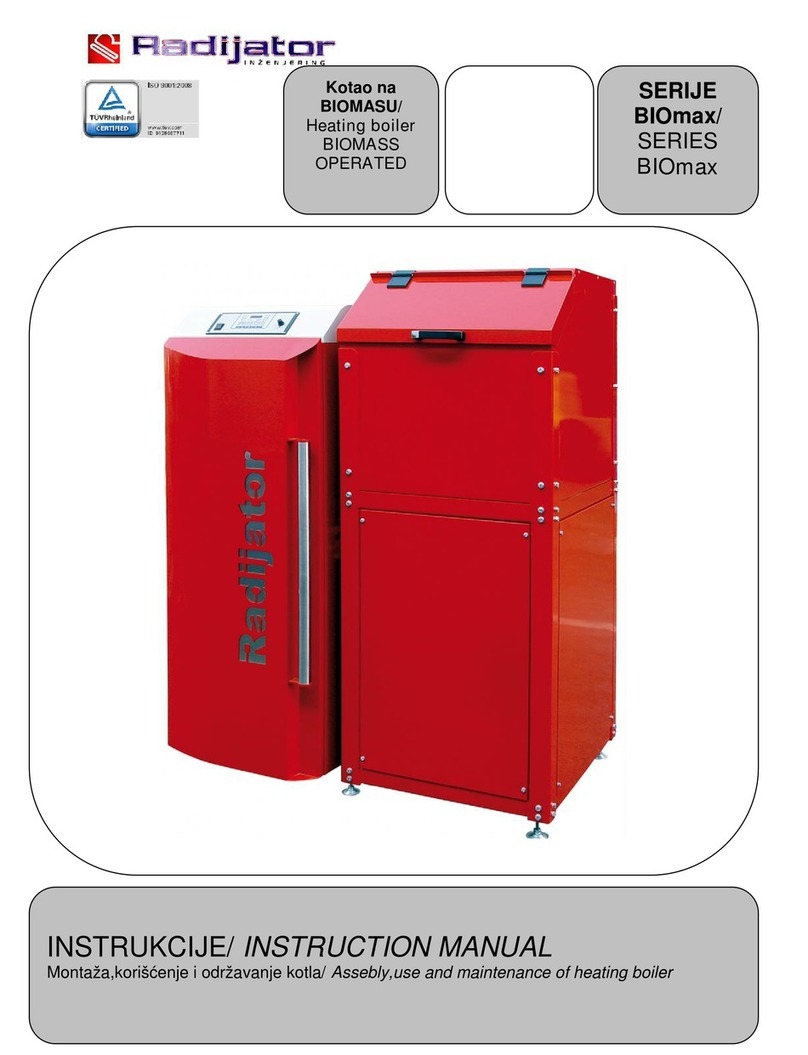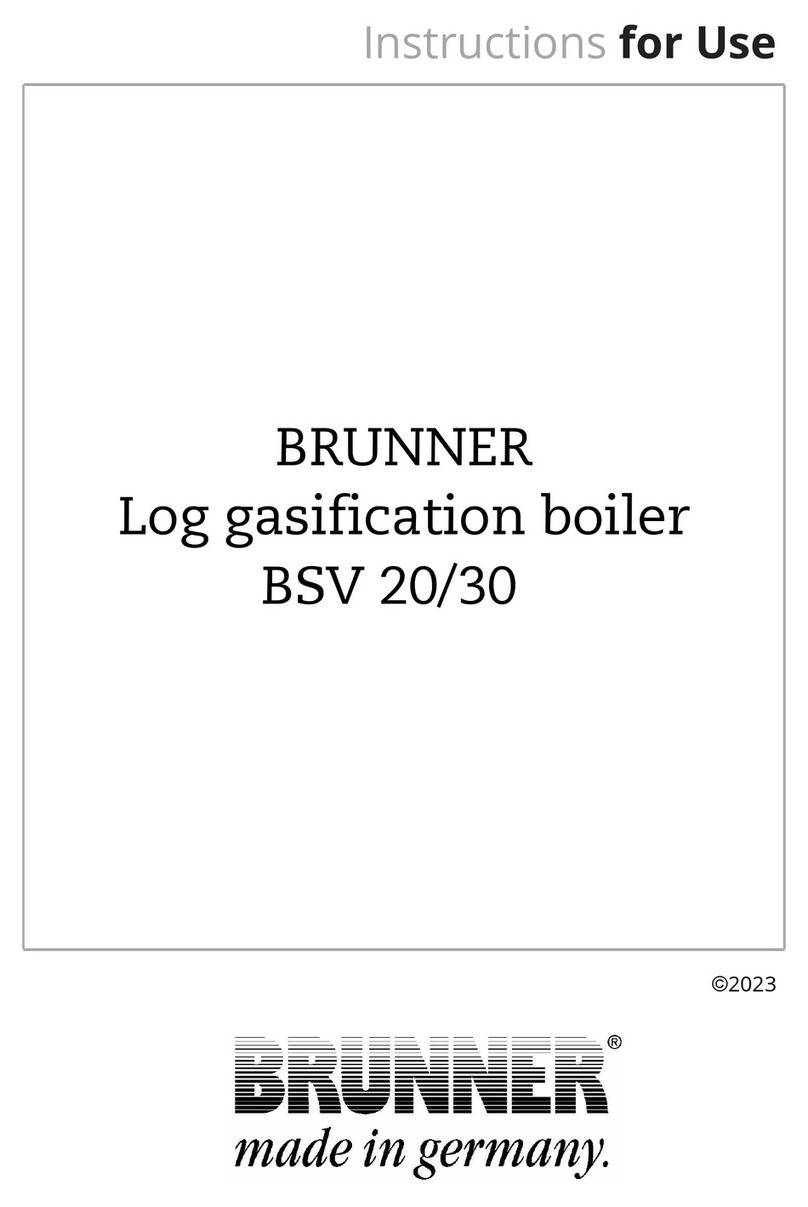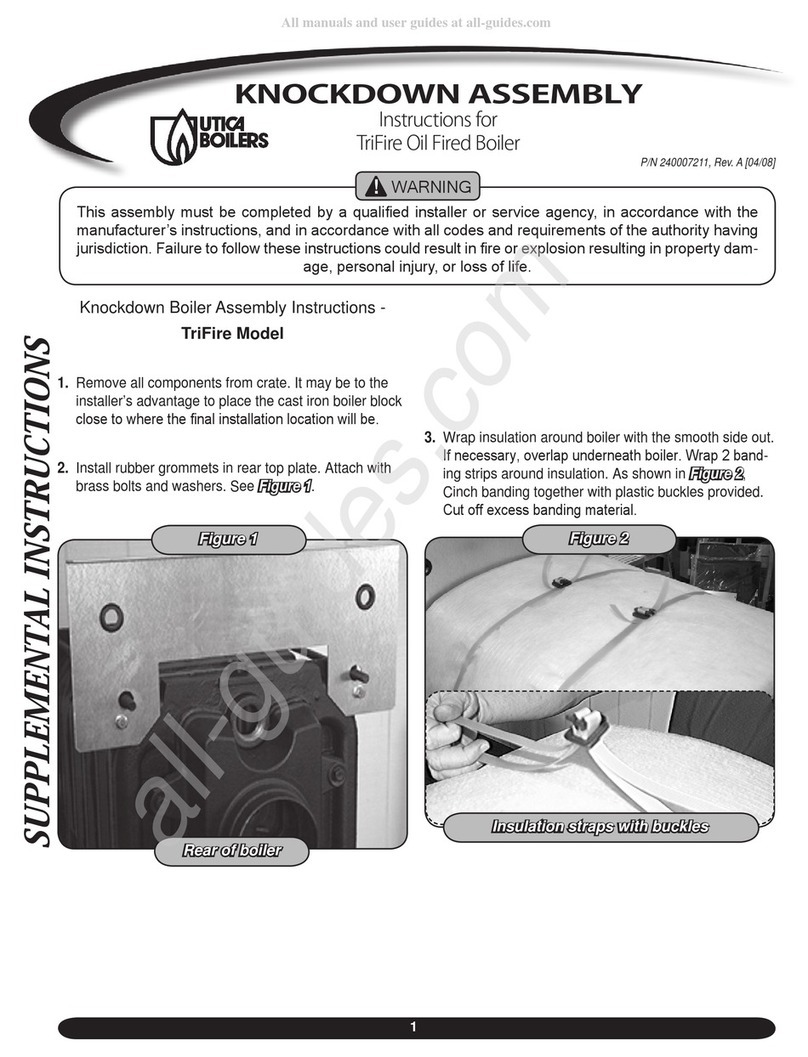GAS-FIRED BOILER Boiler Manual
7
PART 2: BEFORE YOU START
(CONT’D)
have their own individual pump connected to
each follower boiler.
4. System Display and Operation Led light
Indicators – The display allows the user to
change the system parameters and monitor
the system outputs. Led light indicators
monitor operation through illumination of
Indirect Pump – Boiler Pump – System Pump
– Flame On – System Fault.
5. Gas Valve – The gas valve senses suction
from the blower allowing gas to flow only if
the gas valve is powered and combustion air
is flowing.
6. Swirl Plate or Integrated Venturi – Controls
the air and gas flow into the burner.
7. Burner – Constructed of high grade stainless
steel, the burner uses premixed air gas and
provides a wide range of firing rates.
8. Spark Ignition – The burner is ignited by
applying a high voltage through the system
spark electrode. This causes the spark from
the electrode to ignite the mixed gas off of
the burner.
9. Supply Water Temperature Sensor – This
sensor monitors the boiler outlet water
temperature (System Supply). The control
adjusts the boiler firing rate so the supply
temperature will match the boiler set point.
10. Return Water Temperature Sensor – This
sensor monitors the boiler return water
temperature (System Return). The control
adjusts the boiler firing depending on how
close the return water temperature is to the
supply water temperature.
11. Temperature and Pressure Gauge – Allows
the user to monitor the system temperature
and pressure.
12. Electrical field connections with terminal
strips – The electrical cover allows easy
access to the line voltage and low voltage
terminals strips which are clearly marked to
facilitate wiring of the boiler.
13. Condensation Collection System – This boiler
is a high efficiency appliance, therefore the
boiler will produce condensate. The collection
system has a float switch to monitor the
condensation level to prevent condensation
from backing up into the combustion system.
Inside the collection system there is a built in
trap to seal the combustion system to the
connected drain. This condensate should be
neutralized to avoid damage to the drainage
system or piping.
14. Outdoor Sensor – The outdoor sensor will
monitor the outdoor temperature and adjust
the unit’s set point to provide greater
efficiency.
C. OPTIONAL EQUIPMENT
Below is the list of optional equipment available
for Mod Con Boiler.
• System Sensor (Part # 7250P-324)
• Indirect Sensor (Part # 7250P-325)
• 4” Stainless Steel Outside Termination Vent
Kit (V3000)
• 6” Stainless Steel Outside Termination Vent
Kit (V4000)
• High and Low Gas Pressure Switch Kit with
Manual Reset (Part # 7350P-600)
• U.L. 353 Compliant Low Water Cut-Off
Interface Kit with Manual Reset (Part # 7350P-
601)
• Alarm System (Part # 7350P-602) (to monitor
any failure)
• Stacking Kit (Part # 7350P-603)
• PC Connection Kit (Part # 7350P-320)
• Boiler Caster Kit (Part # 7350P-404)
• Mod Con Condensate Neutralizer (Part #
7350P-611)
These additional options may be purchased
through your HTP Distributor.
PART 3: PREPARE BOILER LOCATION
A. BOILER LOCATION SHOULD BE LEVEL
Before considering the Boiler location, there are
many factors that have to be addressed that are
covered in detail in this installation manual.
Please read the entire manual as it could save

